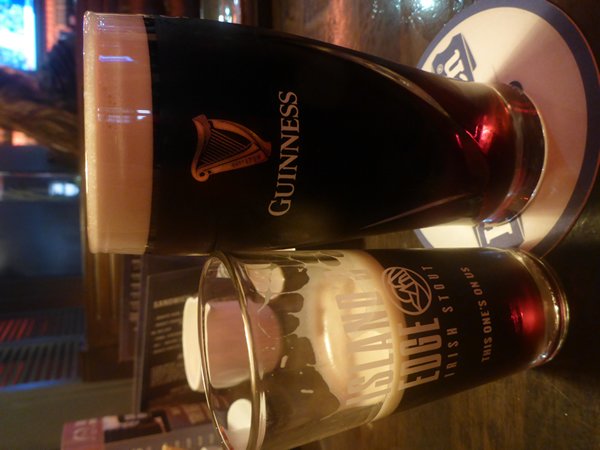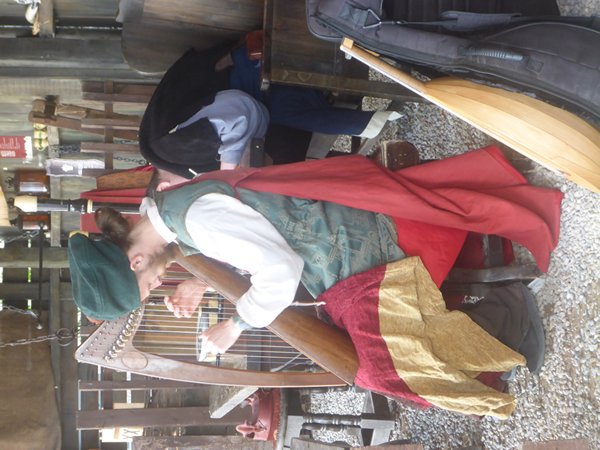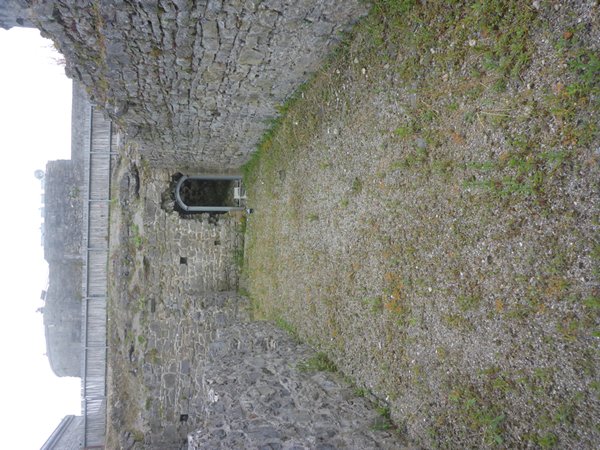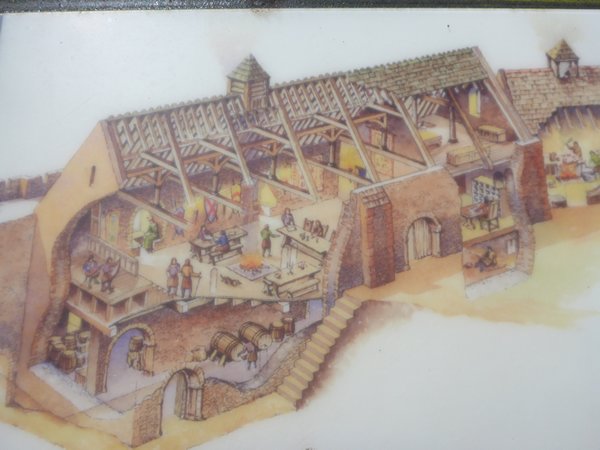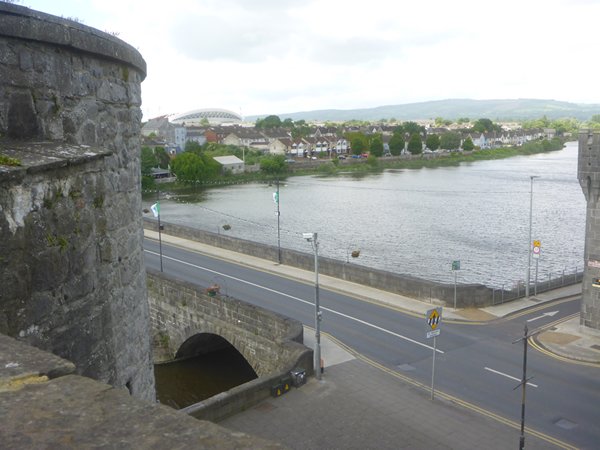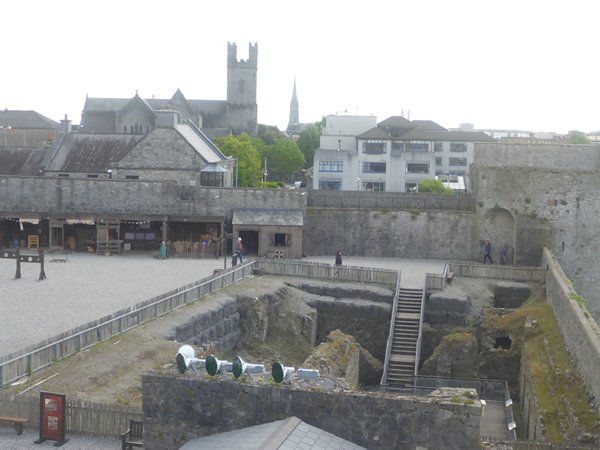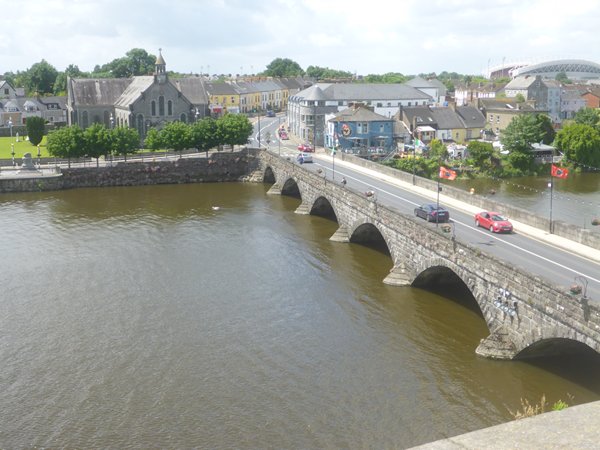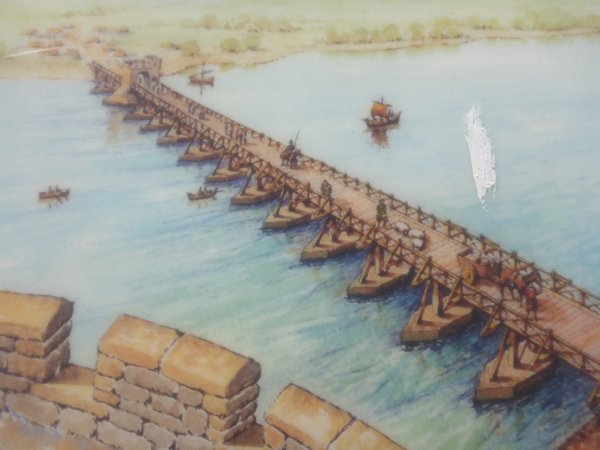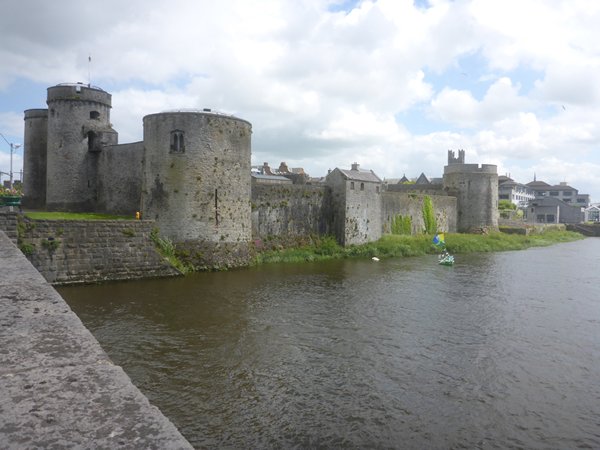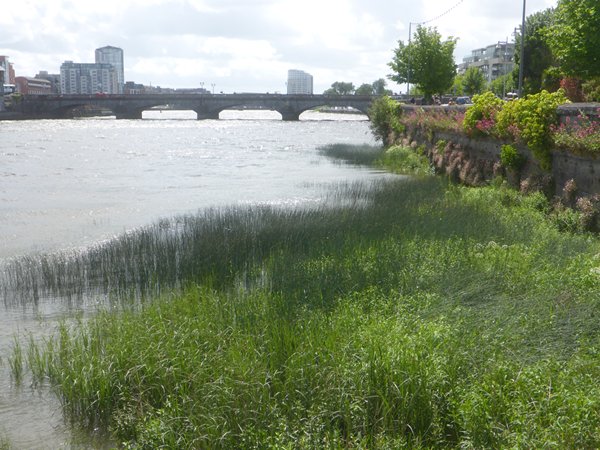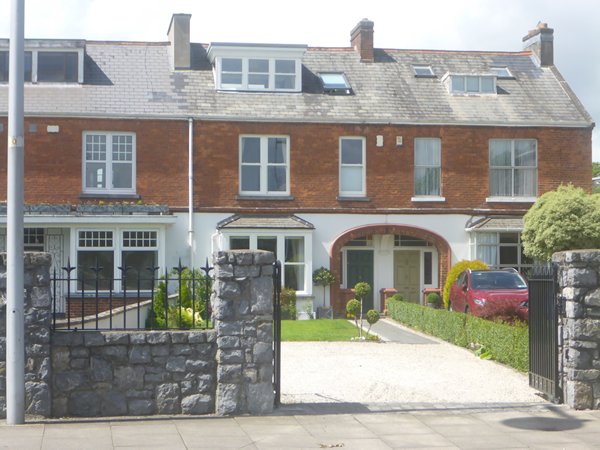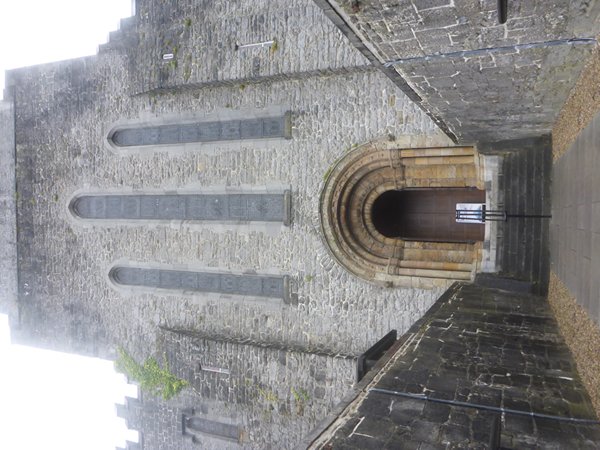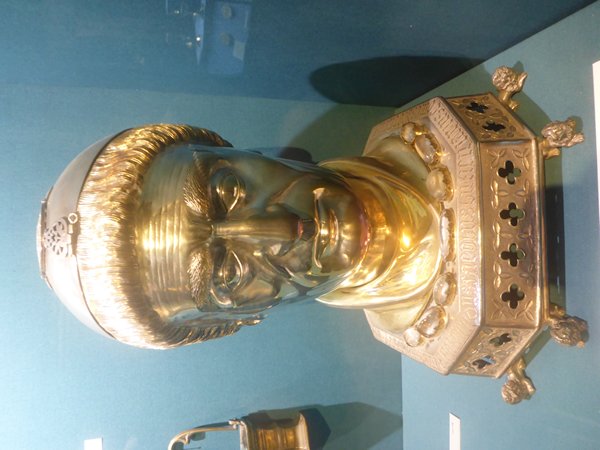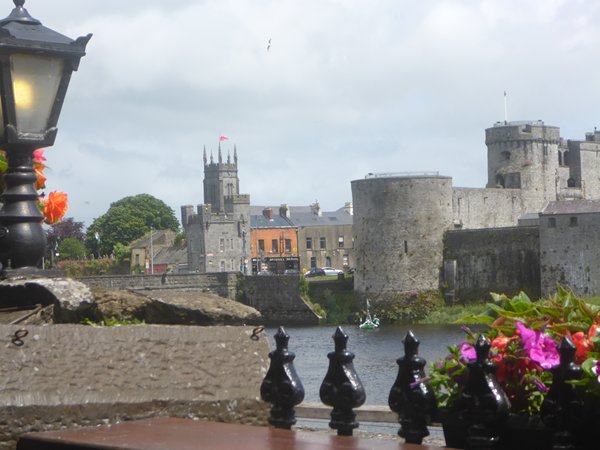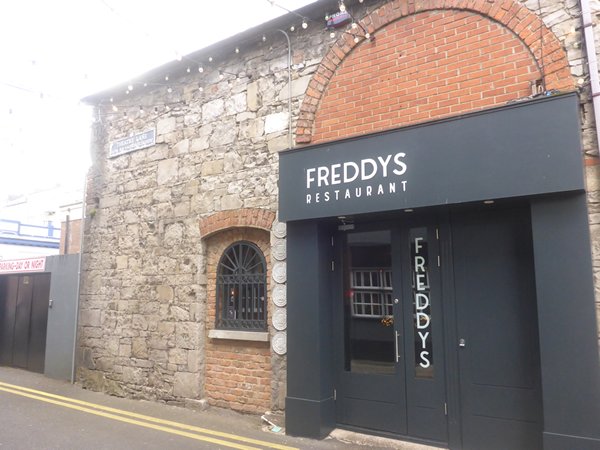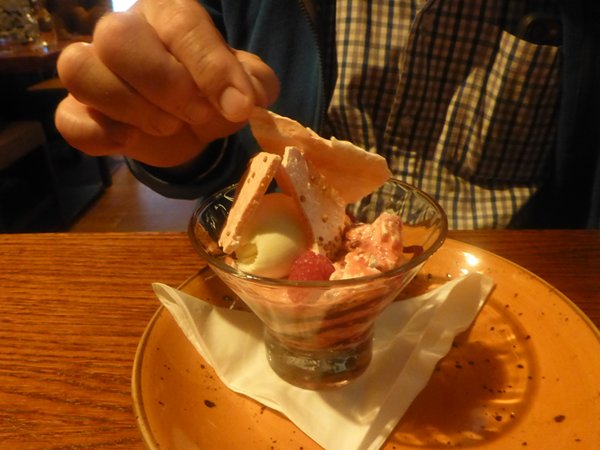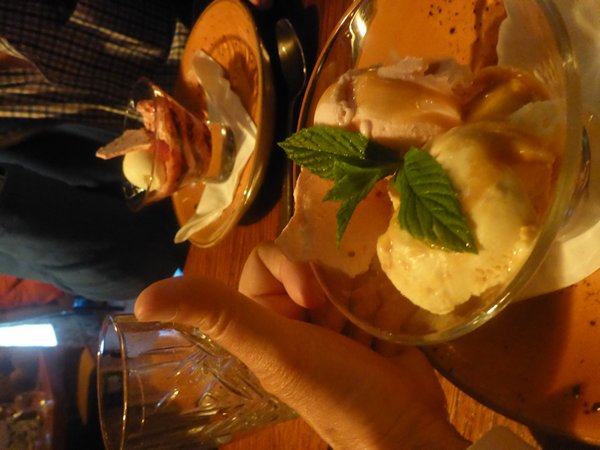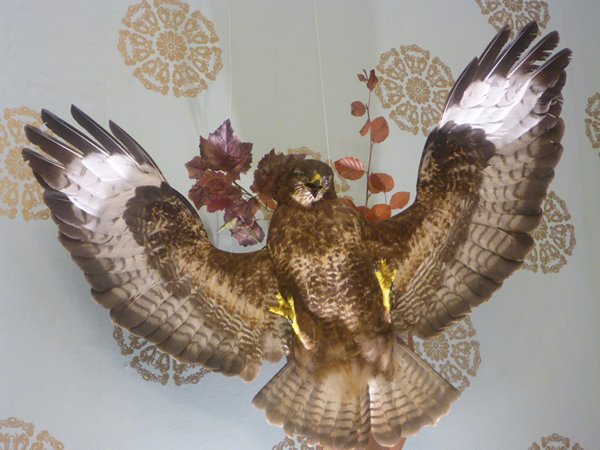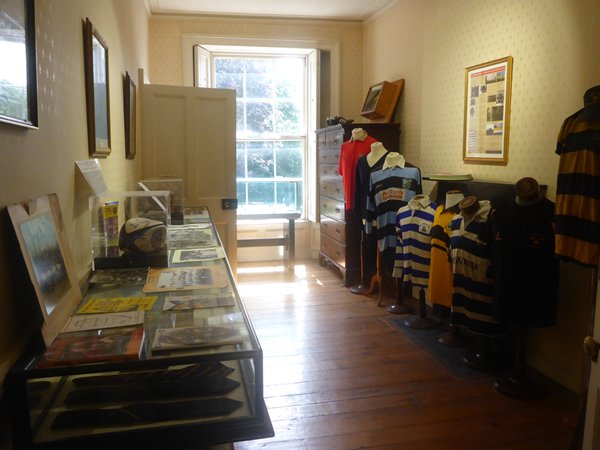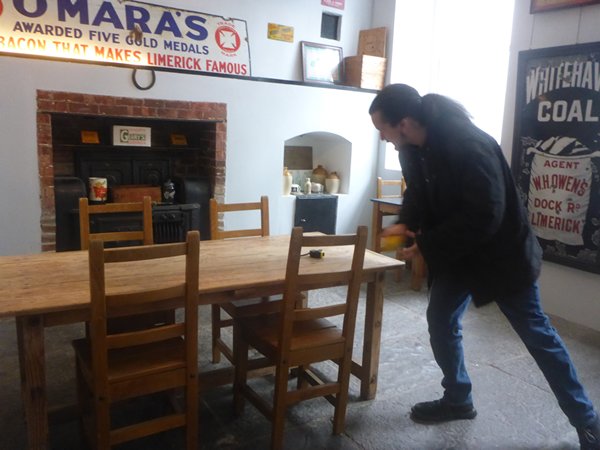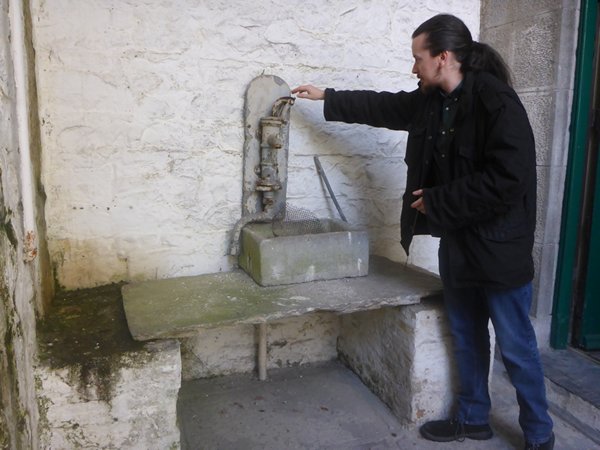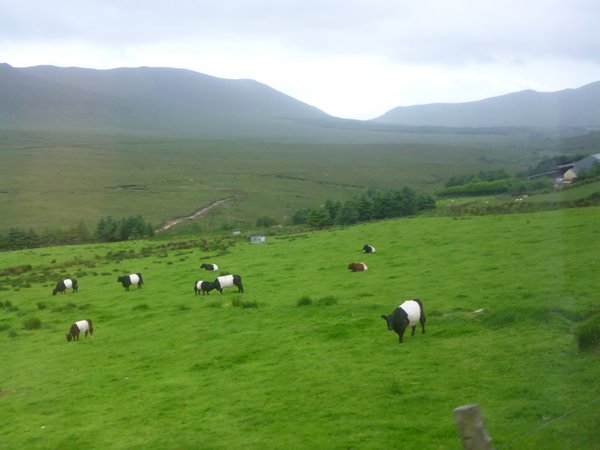A Little Time in Limerick

A Little Time in Limerick
The bus ride from Dingle to Limerick was a great opportunity to visually explore the countryside of County Kerry crossing over the border into County Limerick at Abbeyfeale. We meandered through the awe-inspiring mountains along the Dingle peninsula towards Tralee. Wild and wind-swept slopes and peaks with fertile little valleys where native trees thrived and small farms dwelt nestling below. Lots of the little villages we passed through had suffered an economic downturn of some sort with empty shops and houses falling into ruin. After a short wait at Tralee bus station we were off again, the Mullaghareirk Mountains to our right, we exchanged views of the vast Atlantic for a landscape dotted with small houses in all states of repair from roofless to pristine and greener farms with more organised fields and bigger herds and flocks.
The Limerick area was inhabited as early as 150 AD and there was a settlement on little King’s island around 500 AD. The Vikings sailed up the river and created a walled city on the same island in 812 AD, now overlooked by skyscrapers of the city. Just a little potted history.
We couldn’t get into the room until 3.00pm so we left our backpacks behind the desk and started exploring. I think we have a nose for seeking out friendly hostelries now, so very soon we were perched on stools in the Old Quarter testing their ale. I should explain that the two glasses of Island’s Edge were 1/3pint tasters and if you do not believe me the next picture proves the point, we thought it was a good way to start. Some wholesome home-made soup filled and nourished the parts the beer couldn’t reach and set us up for an afternoon of exploring King John’s Castle.
By all accounts Norman King John (reigned 1199 – 1216) was not a good king but this was not reflected in the castle he ordered to be built to defend the river crossing and the Norman kingdoms on the east of the Shannon from the Gaelic tribes on the west side.
Today all five sides of the castle are complete but for many years there were only walls on the north side. Built in 1210, what is left of the walls is intact and we were able to walk along the ramparts on the north side and between the twin towered gatehouse to enjoy lovely views over the Shannon, downriver and across the Thomond Bridge which links the castle to the County Clare side of the Shannon.
The remains of the great hall are the only original building within the walls. A new wall was built along the centre of the old hall and a new floor laid over it, so the original hall became storerooms beneath. It takes a little imagination to hear the noise of food preparations and revelry at the banqueting table, smell the aroma of roasting meats and sense the bawdry excitement as an evening of entertainment moved forward into the night hours.
While atop one of the towers we spied a very attractive looking hostelry overlooking the river so decided to cross the Thormond Bridge and investigate the other bank. You can see the modern bridge is a recent built dating from 1840. The first bridge was built of wooden trestles mounted on limestone stacks and was defended on the far end to protect the Norman lands.
The Clare shore of the Shannon is totally different from the Limerick side. We had walked through the retail centre of the city on our arrival and now we were walking past some stylish homes in a pleasant urban area.
Feeling a little legless by now we made our way back to find our hotel room and can you just imagine my joy when, as I entered the ensuite there in front of me lay the unmistakeable form of a white BATH! After a quick snooze to catch up on the days toil, I luxuriated in warm bubbles before we crossed the road for a basic and tasty Chinese meal care of Madame Mok.
The next morning a nice young man said we couldn’t look around the cathedral for half an hour because there was going to be a service and not wishing to intrude or hide away in one of the confessionals, we walked the few metres to the Hunt Museum collected by John and Gertrude Hunt. From the Stone Age to the modern era works of art and objects of all kinds are gathered together from Egypt, Greece, Rome, China, Japan, South America and Africa. Two items that surprised me were a nearly intact round beaten Bronze Age Shield found in mud Thameside, a mud larkers high day, and secondly the beautifully made and lifelike reliquary bust of St Patrick. The cranium hinged upwards to allow the placing of a relic of the saint inside.
In their widespread travels the Hunt’s would stay in their touring caravan, as we could see in a photo of them at Sutton Hoo archaeological site. I admired the simplicity and economy of this cultured couple.
Saint Mary’s Cathedral has been listening to faithful human voices for nearly nine hundred years. Approaching from the west the entry is through the Great West Door, a fine Romanesque style entrance taken from the palace of King Donal Mór O’Brien’s Palace which stood on the site previously. I was amazed at the simple rock construction of the walls, rising rustic and immensely strong to the Barrel-Vaulted oak roof. Over time people have, through faith, gratitude and reverence added chapels, sanctuaries, five magnificent chandeliers and so on and one gets the feeling that this fine building is very much in use and loved by locals and visitors alike.
For a snack lunch we sat in the pub over the river we had found the day before, the Curragower, on Clancy’s Strand with its elegant views of the castle and cathedral.
I was in for a treat that evening, must have done something right. Freddy’s is a candle lit intimate place to eat set into what was once a nineteenth century coach house. Candles and light strips lit the upstairs where we sat so the photos are a bit dull, well I couldn’t really start blinding the clients with a flash could I?
I had an all vegan nut roast in filo pastry and Rob disappeared into a juicy red steak followed by a triple ice cream for me and Eton Mess for Rob. A lovely way to round off a busy day.
Next morning, my last opportunity for a bath until I know not when, feeling very clean and relaxed I hugged Rob’s arm as we made our way for a little art appreciation at the gallery in the people’s park, up market Pery’s Square.
It didn’t take long to look around and then the nice man at the desk told us about the People’s Museum, once a fine Georgian home and now housing collections of the William Parker Carrol family, he had a shining military career on the British side in the Napoleonic Wars, also a collection of fine Limerick lace, taxidermy of many animals that died naturally, an entire room full with toys and model ships and another dressing room full with rugby paraphernalia and a small collection illustrating the life and death of Frank McCourt to name but few.
The best part for me was being shown around by young Mike, who promised a tour of around one hour to ninety minutes and finished his fascinating, quietly spoken story after more than two hours. He took us from the maps at the front door, to the master bedroom upstairs, down to the basement kitchen and bakers and butlers bedroom windows that looked into the kitchen in the area of the oven and wine cellar respectively. From there we went to the garden via the old well and pump and found ourselves in an area of green no bigger than ours and a massive coach house at the bottom now used for many things, a real asset to the museum. All for three Euros each!
Tanked up with culture, history, fresh air, good food and Guinness, our last at a friendly old sports bar where the local horse and cycling fanciers fraternity made us most welcome, our bus carried us back from urban Limerick to the wild mountains and dairy herds of the Dingle peninsula, and Zoonie.

